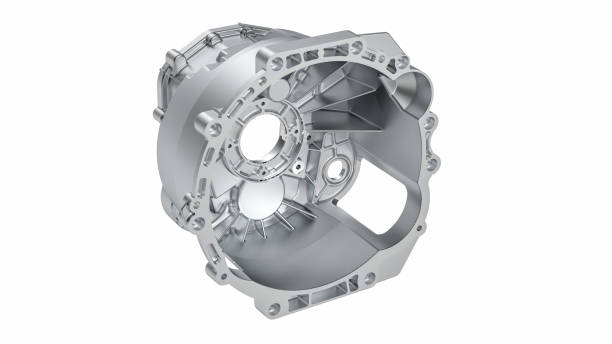Nowadays, there are several types of bronze foundry, each with particularities that allow the creation of various bronze products, with specifications that also change according to the casting process. And that’s today’s subject, here on the Castingod’s blog!
However, before we get to know the most common types, it is worth reinforcing again the importance and characteristics of this, which is one of the most used metal alloys in the world. Bronze is an element only obtained from the union of other metal alloys, such as tin and copper (main bases), and even proportions of aluminum, zinc, nickel, lead, and phosphorus. Each element gives bronze characteristics, such as mechanical resistance against corrosion, etc.

Bronze is present in several solutions worldwide, as a critical element for manufacturing different types of parts in heavy industry, within the decoration segment, and so on. To ensure such versatility, on a case-by-case basis, one of the most critical steps is precisely bronze casting. Check it out following the post!
4 TYPES OF BRONZE CASTING: SEE HOW EACH PROCESS IS
Within the universe of metal casting, there are four main processes when we think of bronze casting. These are the processes of centrifugation, continuous casting, casting in metal molds, and sand casting.
As we pointed out at the beginning of the text, each one guarantees very particular characteristics for each bronze product being produced. Check it out in detail:
Centrifugation method:
It is a type of bronze casting that occurs by pouring liquid metal directly into a metal mold. This mold, in turn, is in constant rotation and has pressure generated by centrifugal force, which forces the liquid toward the wall of the mold. As a result, parts are generated with small granulation and compact material, without porosity, and with a very high-quality standard.
Continuous casting:
For the manufacture of large quantities of bronze parts, the most suitable process is continuous casting. It is a method that works with indirect cooling (using water) and graphite molds. As a result, it can guarantee, depending on the need, the manufacture of round, rectangular, square, and even tubular parts.
These are pieces with a more refined structure, especially compared to solutions created in sand and iron molds. As a result, they present more excellent compaction and are also porosity-free.
Casting in metallic molds:
Type of foundry that uses liquid metal casting in molds made with static metallic alloys. It is a process indicated for manufacturing simple and complex shapes, always with a high standard of finishing and outstanding dimensional tolerance.
Sand Mold Casting:
As the name suggests, this is a process that uses sand molds during the manufacture of bronze parts. The metal, still in a liquid state, is transferred to the mold already with the exact shape and measurements according to the parts that will be generated.
This method’s great advantage is its versatility and the wide variety of options that can be manufactured. A good example is that casting bronze in a sand mold makes it possible to produce parts weighing between 2 and 3,000 kg.
You may have heard about cast aluminum parts, especially cookware and appliances. It is an efficient solution for developing high-quality accessories of simple or complex shapes.
After all, what is cast aluminum? How is this process done? What are the advantages and main applications of aluminum casting? We’ve gathered all the answers in this article; read on!
Learn more about aluminum casting.
First, to understand cast aluminum, it is essential to know everything about its manufacturing process: metal casting. Several metallic alloys are submitted to this processing, and, in the case of aluminum, it is an easy technique since the raw material has a low melting point.

In general, there are three main ways to manufacture cast aluminum; learn a little more about each of them:
- Aluminum casting in the sand: process in which liquid metal leaks through sand molds. The technique provides a variety of geometries for cast aluminum parts and low production costs.
- Metal die casting: the second alternative is casting the metal into a die made of iron or steel. This aluminum casting technique ensures greater precision in details and excellent surface finish.
- Aluminum casting under pressure: finally, forcing the metal to penetrate a mold through hydraulic pressure is ideal for those who want to produce a larger quantity of cast aluminum parts with low porosity and excellent surface finish.
Advantages: Is it worth investing in cast aluminum?
Now that you know the main methods used to manufacture cast aluminum parts, it’s time to discover the advantages of investing in them. After all, is cast aluminum any good?
To answer this question, we have gathered below some benefits that aluminum casting offers; follow along:
- aluminum weight reduction;
- excellent vibration absorption;
- high resistance to fatigue, corrosion, and wear;
- shape stability;
- impeccable finish and well-designed edges;
- greater durability;
- good cost-benefit;
- variety of cast aluminum parts;
- and much more!
Applications: high performance for all industrial sectors

Faced with so many advantages, cast aluminum is a solution that stands out in several industrial sectors and is valid even for civil construction. The main applications are manufacturing auto parts, automobiles, furniture, pans, and thin walls.








